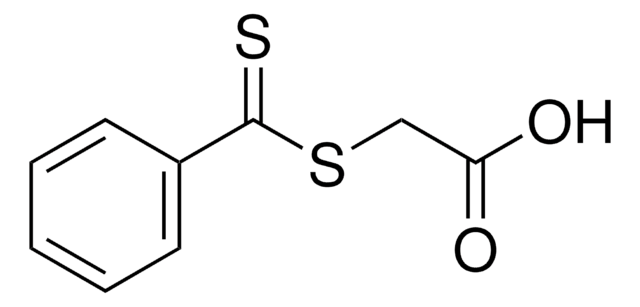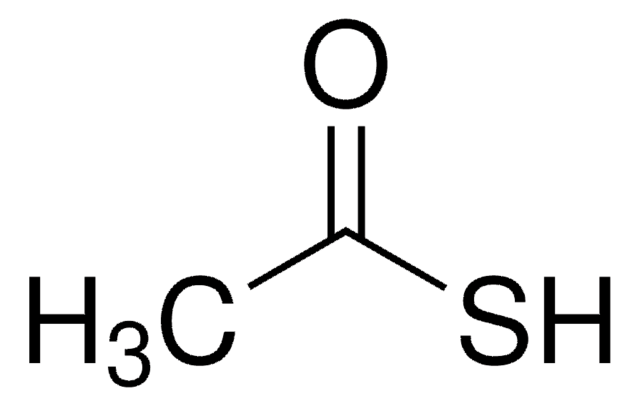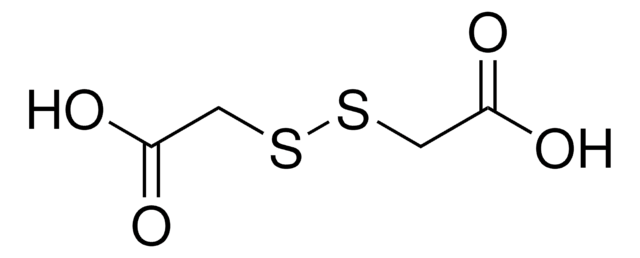T3758
Thioglycolic acid
98%
Synonym(s):
Mercaptoacetic acid
About This Item
Recommended Products
vapor density
3.2 (vs air)
Quality Level
vapor pressure
0.4 mmHg ( 25 °C)
Assay
98%
form
liquid
autoignition temp.
662 °F
color
clear colorless
refractive index
n20/D 1.505 (lit.)
bp
96 °C/5 mmHg (lit.)
mp
−16 °C (lit.)
solubility
water: soluble 1.000 g/L at 20 °C
density
1.326 g/mL at 20 °C (lit.)
functional group
carboxylic acid
thiol
shipped in
wet ice
storage temp.
2-8°C
SMILES string
OC(=O)CS
InChI
1S/C2H4O2S/c3-2(4)1-5/h5H,1H2,(H,3,4)
InChI key
CWERGRDVMFNCDR-UHFFFAOYSA-N
Looking for similar products? Visit Product Comparison Guide
Related Categories
General description
Application
Caution
related product
Signal Word
Danger
Hazard Statements
Precautionary Statements
Hazard Classifications
Acute Tox. 3 Dermal - Acute Tox. 3 Inhalation - Acute Tox. 3 Oral - Aquatic Chronic 3 - Eye Dam. 1 - Skin Corr. 1B - Skin Sens. 1B
Storage Class Code
6.1C - Combustible acute toxic Cat.3 / toxic compounds or compounds which causing chronic effects
WGK
WGK 3
Flash Point(F)
266.0 °F - closed cup
Flash Point(C)
130 °C - closed cup
Personal Protective Equipment
Regulatory Listings
Regulatory Listings are mainly provided for chemical products. Only limited information can be provided here for non-chemical products. No entry means none of the components are listed. It is the user’s obligation to ensure the safe and legal use of the product.
PDSCL
Deleterious substance
FSL
Group 4: Flammable liquids
Type 3 petroleums
Hazardous rank III
Water soluble liquid
ISHL Indicated Name
Substances Subject to be Indicated Names
ISHL Notified Names
Substances Subject to be Notified Names
JAN Code
T3758-5ML:
T3758-50ML:
T3758-BULK:
T3758-100ML:4548173951850
T3758-500ML:4548173951867
T3758-VAR:
Choose from one of the most recent versions:
Already Own This Product?
Find documentation for the products that you have recently purchased in the Document Library.
Customers Also Viewed
Our team of scientists has experience in all areas of research including Life Science, Material Science, Chemical Synthesis, Chromatography, Analytical and many others.
Contact Technical Service













